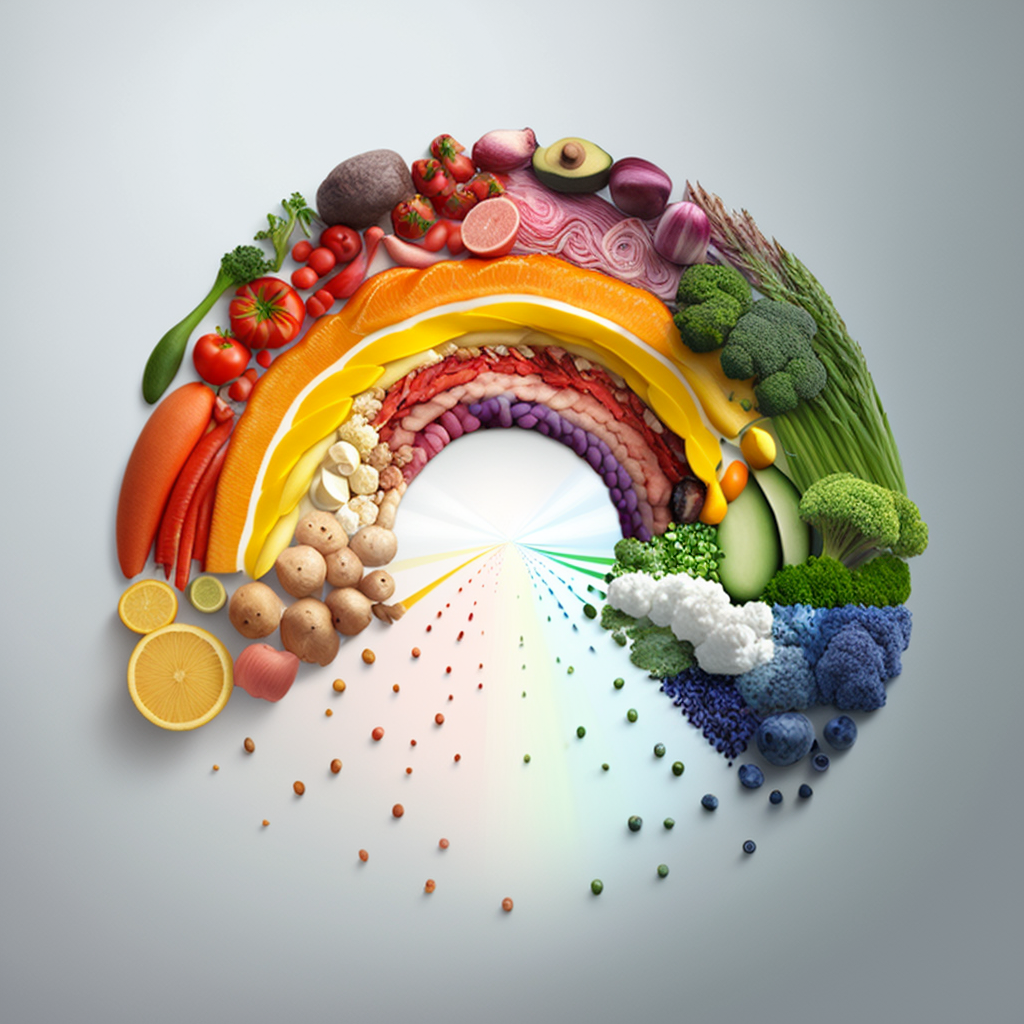To me eating a variety of colorful, plant foods is an important aspect of a healthy diet and terrain. The colors of fruits and vegetables are not just for aesthetics, but also signify a range of nutrients that can benefit our health. From red tomatoes to green spinach and yellow peppers, each color provides a unique set of vitamins, minerals, and antioxidants that can boost our immune system, protect against chronic disease, and promote overall wellness. In this article, we will explore the science-backed evidence and benefits of eating natural foods that are a variety of colors.
The Science of Colors in Food
Each color of fruit and vegetable is associated with specific nutrients that can help to promote health and wellness. Here are some examples:
– Red foods: Red fruits and vegetables, such as tomatoes, strawberries, and watermelon, are high in lycopene, which has been linked to a lower risk of heart disease and some cancers.
– Orange foods: Orange fruits and vegetables, such as carrots, sweet potatoes, and mangoes, are high in beta-carotene, which supports eye health and can help to reduce the risk of certain cancers.
– Yellow foods: Yellow fruits and vegetables, such as lemons, bananas, and yellow peppers, are high in vitamin C, which supports immune function and can help to reduce inflammation.
– Green foods: Green fruits and vegetables, such as spinach, kale, and kiwi, are high in chlorophyll and other phytonutrients that can help to reduce the risk of chronic disease and promote overall wellness.
– Blue and purple foods: Blue and purple fruits and vegetables, such as blueberries, grapes, and eggplant, are high in anthocyanins, which have been linked to a lower risk of heart disease and improved cognitive function.
Benefits of Eating a Variety of Colors
Eating a variety of colors can have numerous health benefits. Here are just a few:
Boosts Immune System: Eating a variety of colorful fruits and vegetables can help to boost our immune system by providing us with a range of vitamins, minerals, and antioxidants that help to protect against illness and disease.
Promotes Digestive Health: A diet rich in colorful, natural foods can promote digestive health by providing us with fiber and other nutrients that support healthy digestion and bowel movements.
Reduces Chronic Disease Risk: Eating a variety of colorful fruits and vegetables has been linked to a reduced risk of chronic disease, including heart disease, diabetes, and certain cancers.
Improves Brain Function: Certain nutrients found in colorful fruits and vegetables, such as anthocyanins and omega-3 fatty acids, have been linked to improved cognitive function and a lower risk of dementia.
Supports Overall Wellness: Eating a variety of colorful, natural foods can help to promote overall wellness by providing us with a range of essential nutrients that support our body’s functions and processes.
Tips for Eating a Variety of Colors
Here are some tips for incorporating a variety of colorful, natural foods into your diet:
Shop the Rainbow: When shopping for fruits and vegetables, choose seasonal organic local food with a variety of colors to ensure that you are getting a range of nutrients.
Mix it Up: Try new fruits and vegetables to keep things interesting and to ensure that you are getting a range of nutrients.
Meal Planning: Plan your meals to include a variety of colors, such as a colorful salad or a stir-fry with a range of colorful vegetables.
Get Creative: Experiment with different cooking methods, such as roasting or grilling, to bring out the flavors and colors of your fruits and vegetables.
In conclusion, eating a variety of colorful, natural foods is essential for maintaining good health and preventing chronic disease. By incorporating a range of colors into your diet, you can ensure that you are getting a range of nutrients.






 No products in the cart.
No products in the cart. 